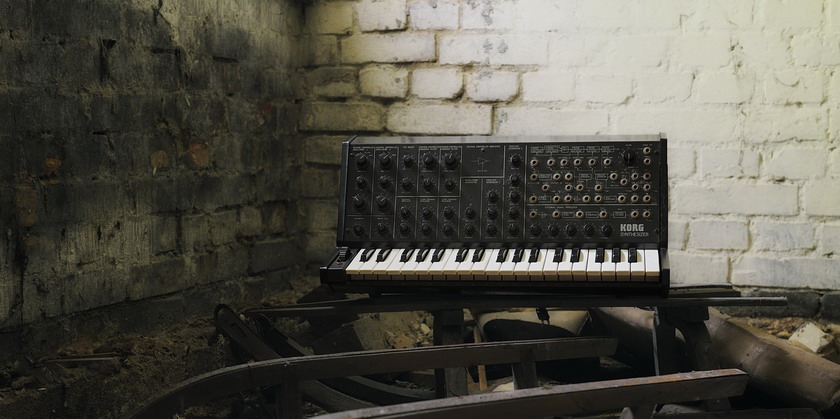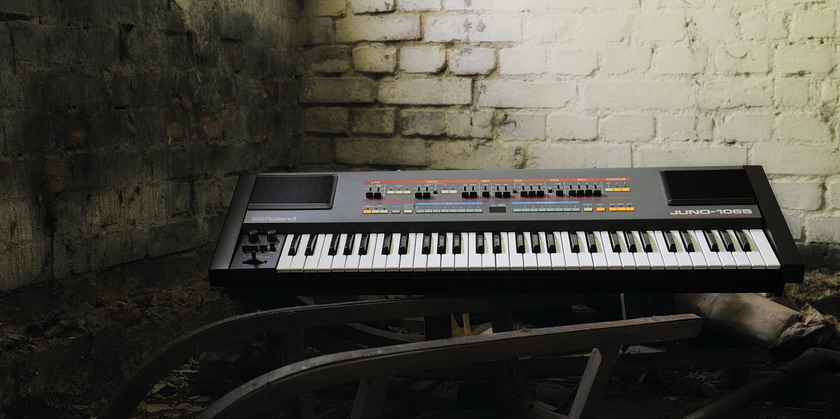Roland RE echoes are, at least nominally, sound effects but I think it is safe to assume that they are instruments, really. Organic, unrepeatable, quirky, simply amazing. When they work, that is.
Internet is flooded with Roland REs that are supposedly mint (of course “for they age”) or ones that will “only need a new tape to function as new”. That is not true. To make a Space Echo function perfectly, we need 30+ hours of hard labour. That’s at least three working days. But then the echo will look and perform like new, just like the one we offer here.
What we do exactly is:
– Perform general cleaning of the inside and outside of the unit, including tedios cleaning of tolex and metal hardware
– For 100V (Japanese) versions, replace the Japanese PSU with brand new, tailor made 230V PSU
– Replace the capacitiors in the PSU
– Regenerate all pots
– Disassemble, inspect, lube and test the motor. Replace noisy bearing when necessary.
– Polish the heads, set proper levels and positioning
– Replace all felts and install newly sliced tape
– Perform calibration to factory specification
We are now switching to Echo Fix parts! analogia.pl is continuing to remain in the Space Echo super league and from now on all of our echoes will feature rollers, tapes and other pieces of hardware supplied by the best specialis in the world, the Australian Echo Fix. The prices of 201 in Japan are rising rapidly in Japan, where we source our echoes and we strive to keep them as low as possible. If you check our prices against other delaers in Europe, you will still notice we are very competitive, especially when a staggering amount of time is spent on each one here at www.analogia.pl
REGULAR PRICE:
Standard price is 2091 EUR (1700 EUR plus 23% VAT).
Please click on the “Contact” tab in the top right corner of the page if you are not sure whether VAT applies to you.
THIS IS ONE OF OUR BEST SELLING PRODUCTS. PLEASE EMAIL TO CHECK AVAILABILITY AS IT MAY CHANGE UNEXPECTEDLY.
FREQUENTLY ASKED QUESTIONS
Q: RE-201 or RE-501? Or maybe RE-301? Which Roland RE should I go for?
A: I wish I had more definite answer. But it depends. Personally, I would call the 501 slightly better behaved (which is technically true as it has redesigned circuitry), while the 201 and 301 are more raw, earlier machines. The 201 has the most delays modes, while 301 and 501 have six. I do not think there is a rule of thumb in case of the RE echoes. If I had to make an assumption, I’d say that the 501 is more of a studio device, while 201 is for giggin gmusicians. But it’s often not the case, really.
Q: How often will I need to change the loop?
A: It depends on how much you use the echo. Some will work on it for hours each day, some a few times a month. What I recommend users is to record a few settings when they receive a freshly restored RE echo witha newly spliced tape and, later, check the present condition of the tape with original, “early” samples. If the delays are dull and muddy, it might be time to replace the tape. The process is very easy, by the way.
Q: I heard the RE echoes are very fragile, prone to failures and generally unreliable.
A: If this was true, our business would have folded several years back. Once properly serviced, echoes are very, very reliable. I have lost track of how many we have serviced over the years but I think the number is anywhere between 250-300. Laws of statistics apply here and I can simply conclude that there is no special risk when buying the RE echo.
Q: RE-101, RE-150, RE-201, RE-301, RE-501 and even the SRE-555. I’m confused!
A: Don’t be. In simple terms, the 101 and 150 is 201 without spring reverb. The 301 is 201 with chorus and Sound on Sound. The 501 is redesigned and updated 301 and 555 is the same as 501 but in a different casing – it’s a rack unit.
Many thanks to Fabrizio Paterlini for taking the time to write an answer to our question: “how would you describe the difference between the RE-301 and RE-501 from performer’s point of view?”.
1. Of course, there’s difference on how the echo sounds. On a first instance, I would say that that the RE 501 is perfect for a studio environment: the repetition and clearer in respect of the 301 and much more gentler. The RE 301 is much more indicated, in my opinion, for a live usage: this model is much more like the RE 201, so it keeps that “unpredictable” character which gives to the unit a “magic” taste. RE 501 seems to be more “modern”, even if actually is not, since the repetitions are more regular and easier to manage, somehow. Also the way in which the “Intensity” knob works is different between the 2 units: the auto-oscillation of the RE 301 is much more intense and easier to get. In the RE 501 this aspect has been “educated” somehow.
2. Regarding SoS, reverb and Chorus: overall, all these features works better on the RE 501, as you might expect. In the model I have of the RE 301, activating the Chorus influences the overall amplitude of the sounds of the echo, which doesn’t happen on the newer RE 501. Spring Reverb sounds “better” on the RE 501: it is less noisy, while keeping the organic sound of a spring reverb. On the other hand, the Reverb on the RE 301 is a bit clunky, noisy but it keeps the “footprint” of the one in the RE 201, so with all it’s scent.
3. Overall, i guess the two models reflect the decade in which they were build and this not only “technically” of course, but also in terms of they way they “sound”: the RE 301 is raw, psychedelic, unpredictable and powerful. The RE 501, on the other hand, loses something of the “wild” nature of the RE 301, but it gains in reliability, noise reduction and overall integration in a more modern studio environment (the XLR connectors say it all!).













